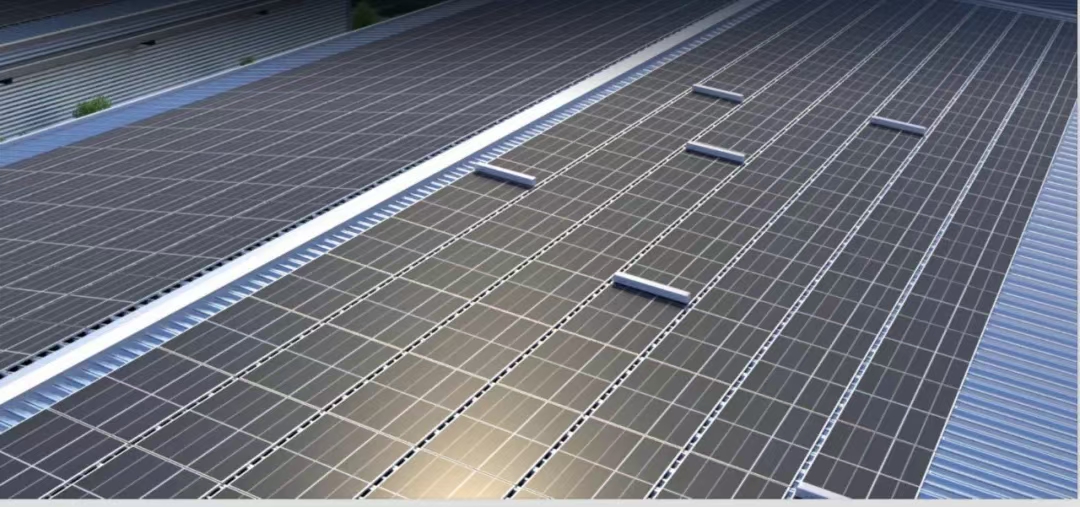一、BIPV和BAPV的定义
1、 Definition of BIPV and BAPV
BIPV即光伏建筑一体化,是与建筑物同时设计、同时施工和安装并与建筑物形成完美结合的太阳能光伏发电系统,也称为“构建型”和“建材型”太阳能光伏建筑。它作为建筑物外部结构的一部分,既具有发电功能,又具有建筑构件和建筑材料的功能,甚至还可以提升建筑物的美感,与建筑物形成完美的统一体。
BIPV, also known as photovoltaic building integration, is a solar photovoltaic power generation system that is designed, constructed, and installed simultaneously with buildings, forming a perfect combination with them. It is also known as a "building type" or "building material type" solar photovoltaic building. As a part of the external structure of a building, it not only has the function of generating electricity, but also has the function of building components and materials. It can even enhance the beauty of the building and form a perfect unity with the building.
BAPV是指附着在建筑物上的太阳能光伏发电系统,也称为“安装型”太阳能光伏建筑。它的主要功能是发电,与建筑物功能不发生冲突,不破坏或削弱原有建筑物的功能。
BAPV refers to solar photovoltaic power generation systems attached to buildings, also known as "installation type" solar photovoltaic buildings. Its main function is to generate electricity, which does not conflict with the functions of buildings and does not damage or weaken the functions of existing buildings.
简单来说,BIPV可一物两用,作为屋顶、天窗、建筑物外立面等的替代物品。我国业界通常称BIPV为“光伏建筑”或“光伏建筑一体化”。而BAPV仅为附着安装在建筑物上的光伏材料,不承担建筑物的功能。
Simply put, BIPV can be used as a dual purpose alternative to roofs, skylights, building facades, and more. BIPV is commonly referred to as "photovoltaic building" or "photovoltaic building integration" in the Chinese industry. BAPV, on the other hand, is only a photovoltaic material attached to buildings and does not assume the functions of the building.

二、BIPV和BAPV的不同点
2、 Differences between BIPV and BAPV
两者不同点在于:BIPV已经作为建筑物必不可少的一部分发挥着建筑材料的作用,不仅能满足光伏发电的功能要求同时还可以兼顾建筑的功能要求,是光伏产品和建筑材料的结合体,可以替代部分传统的建筑材料,在建筑设计阶段进行一体化设计,在建设中与建筑主体一体成型。而BAPV建筑中的组件只是通过简单的支撑结构附着在建筑上,拿开光伏组件后,建筑功能依然完整。
The difference between the two is that BIPV has already played a crucial role as a building material as an essential part of buildings. It can not only meet the functional requirements of photovoltaic power generation but also take into account the functional requirements of buildings. It is a combination of photovoltaic products and building materials, and can replace some traditional building materials. It is integrated in the architectural design stage and integrated with the main body of the building during construction. The components in BAPV buildings are only attached to the building through simple support structures. After removing the photovoltaic components, the building's functionality remains intact.
BIPV将太阳能发电设备—太阳电池板设计成为各种形式的建筑装饰材料,取代玻璃幕墙、外墙装饰石材、屋顶瓦等传统建筑材料,同时作为太阳能光伏发电系统,为用电负载提供绿色、环保、清洁的电力。BIPV已经为建筑物不可分割的一部分,光伏组件起到了遮风挡雨和隔热的功能,拿开光伏组件之后,建筑将失去这些功能。而BAPV不会增加建筑物的防水、遮风的性能。而且,BAPV会增加建筑负载,影响建筑的整体效果,另外,对建筑物表面来说,BAPV还存在重复建设的问题,严重浪费了建筑材料。
BIPV designs solar power generation equipment - solar panels - as various forms of building decoration materials, replacing traditional building materials such as glass curtain walls, exterior wall decorative stones, and roof tiles. At the same time, BIPV serves as a solar photovoltaic power generation system to provide green, environmentally friendly, and clean electricity for electrical loads. BIPV has become an integral part of buildings, and photovoltaic modules play a role in sheltering from wind, rain, and insulation. Once the photovoltaic modules are removed, the building will lose these functions. And BAPV will not increase the waterproof and windproof performance of buildings. Moreover, BAPV will increase the building load and affect the overall effect of the building. In addition, for the surface of the building, BAPV also has the problem of repeated construction, seriously wasting building materials.
BIPV结构上应遵循“建筑材料”相关规范与技术要求,并非简单机械化地“绑在一起”,而是高度集中一体化,为“1+1=1”。而BAPV是分体式的,可分开使用,光伏组件拆解下来依然可以独立使用。
The BIPV structure should follow the relevant specifications and technical requirements of "building materials", not simply mechanically "tied together", but highly centralized and integrated, with "1+1=1". And BAPV is a split type that can be used separately, and the photovoltaic modules can still be used independently after disassembly.
光伏与建筑的结合,能够有效降低建筑用能,大力发展低碳、零碳建筑,对于节能减排、保护环境具有重要的现实意义。
The combination of PV and buildings can effectively reduce building energy consumption, vigorously develop low-carbon and zero carbon buildings, and has important practical significance for energy conservation, emission reduction and environmental protection.
This article is dedicated by the BIPV building integrated photovoltaic friendship of industry and commerce. For more relevant knowledge, please click on: http://www.zdnygf.com Sincere attitude. We will provide you with comprehensive services. We will gradually contribute more relevant knowledge to everyone. Stay tuned



 TEL:0531-82390078
TEL:0531-82390078 TEL:18805312017
TEL:18805312017 MAI:sdzdny001@163.com
MAI:sdzdny001@163.com 公司地址: 济南市历下区山大路157号
公司地址: 济南市历下区山大路157号 天合蓝天·山东种电
天合蓝天·山东种电 备案号:鲁ICP备17052940号-2
鲁公网安备37010202700164号
备案号:鲁ICP备17052940号-2
鲁公网安备37010202700164号
 网站地图|XML|TXT
网站地图|XML|TXT

